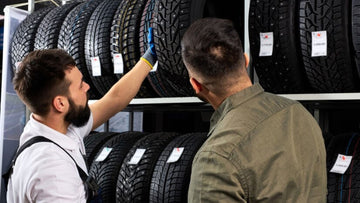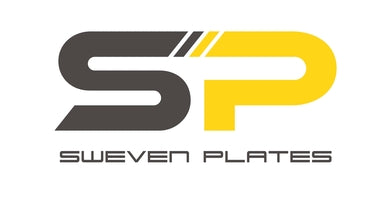
Purchasing new car tyres can seem daunting, yet given their role as the sole point of contact between your vehicle and the road, they undeniably stand as the car's most critical component. To simplify the process, here's a comprehensive guide to consider when selecting tyres for your vehicle.
Buying Your Car Tyres:
Before embarking on selecting new tyres, it's imperative to obtain precise measurements for your car's tyres. This information is readily available on the sidewall of each tyre.
Standardisation of tyre size information ensures uniformity across all tyres. For instance, a tyre may bear size lettering such as 205/55 R16 91W:
- 205: Width of the tyre in millimeters
- 55: Side profile of the tyre as a percentage of the width (lower numbers indicate 'low profile' tyres)
- R16: Diameter of the wheel the tyre fits, in inches
- 91: Load index denoting the tyre's load capacity (91 corresponds to 615kg)
- W: Speed rating indicating the tyre's capability matched to the car's top speed (W signifies 168mph)
After Purchasing Your Tyres:
Investing in the right tyres is merely the initial step; it's equally crucial to ensure their proper maintenance and upkeep.
Regularly inspecting tyre condition is not only vital for safety but also essential to meet legal requirements regarding tyre condition. Refer to a quick instructional video to learn how to assess tyre condition, including tread depth.
Factors to Consider When Purchasing Tyres:
When in the market for new tyres, several factors merit consideration to ensure the optimal selection for your vehicle and driving preferences.
Prioritise checking tyre size, condition, and associated ratings. Additionally, contemplate whether winter or performance tyres align better with your driving conditions and personal inclinations.
Regardless of your choice, ensure the tread pattern suits your driving needs, and seek tyres with a tread life warranty if feasible. Evaluate load rating, wet driving performance, speed rating, and fuel efficiency rating before finalising your purchase.
Establish a budget, bearing in mind that quality tyres represent an investment in safety and performance. Avoid compromising excessively on quality for cost considerations. Explore available warranties as well.
Optimal Tyre Maintenance:
Effectively maintaining your tyres is paramount for safety, performance, and longevity, ultimately leading to cost savings over time.
Adhere to recommended tyre pressure as stipulated in your vehicle's owner's manual to mitigate premature wear and fuel consumption associated with underinflated tyres. Conversely, overinflated tyres can compromise vehicle handling and induce uneven tyre wear.
Regularly assess tread depth using a gauge or similar tool. Replace tyres if tread depth falls below safe levels to ensure continued safety on the road.
During routine visits to your local garage, request alignment checks to prevent uneven wear and steering issues.
Avoid overloading your vehicle throughout the year, as excess weight can accelerate tyre wear and diminish performance.
Adopt a non-aggressive driving style to minimise strain on tyres and extend their lifespan. Exercise caution to avoid potholes and road imperfections whenever feasible.
Incorporate tyre inspection as part of your regular car maintenance routine, including spare tyres.
Prioritise tyre replacement when wear, damage, or aging compromises their integrity, irrespective of apparent tread depth. This proactive approach enhances safety for yourself and fellow road users.
